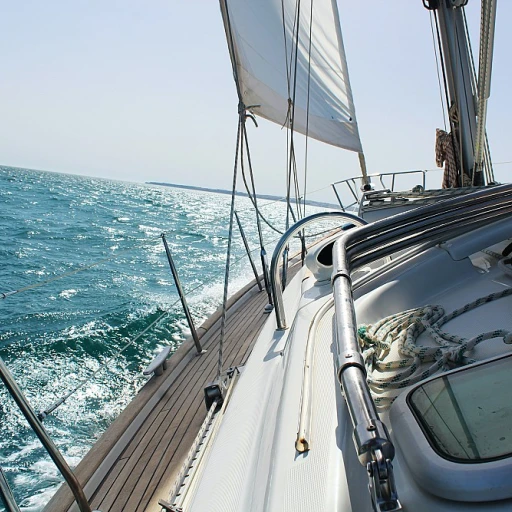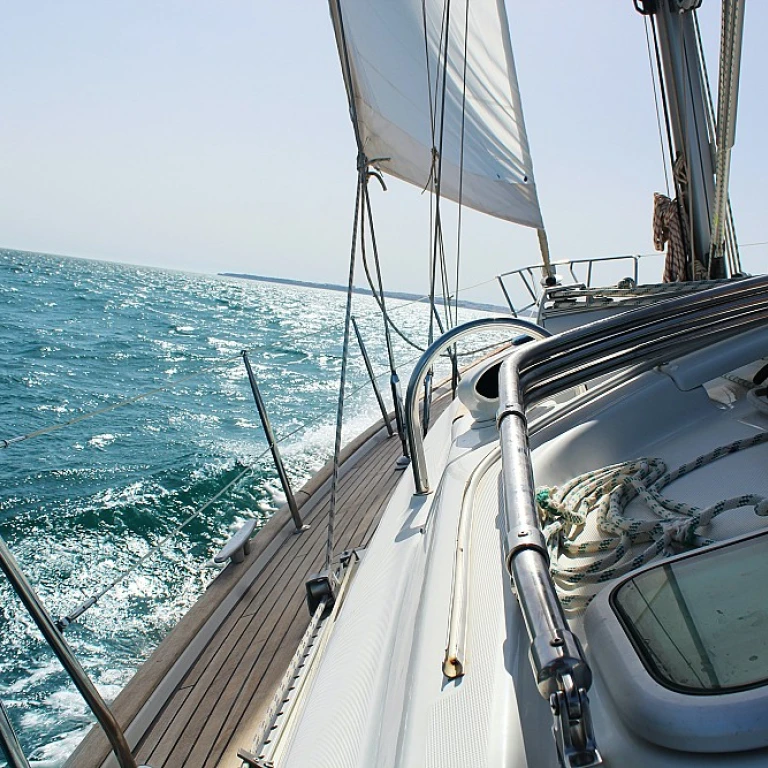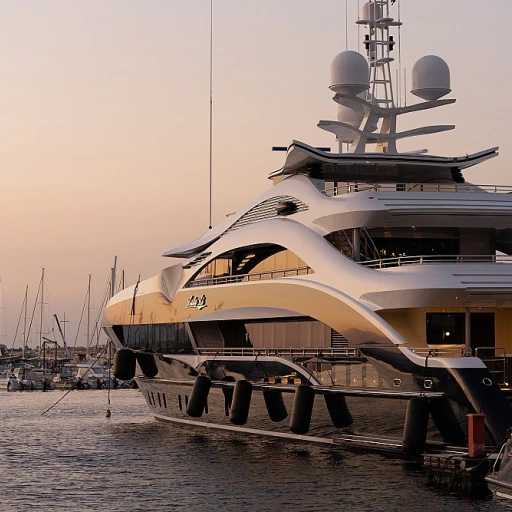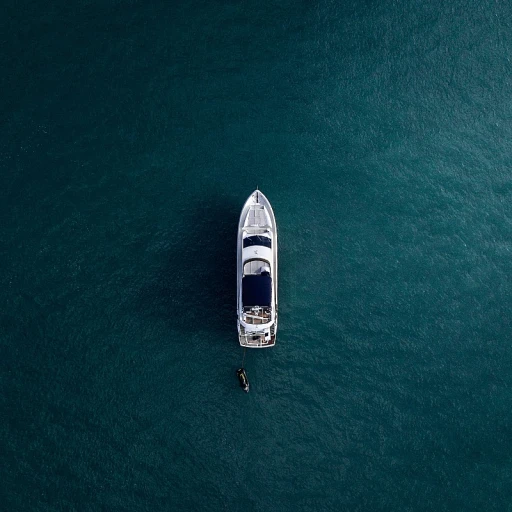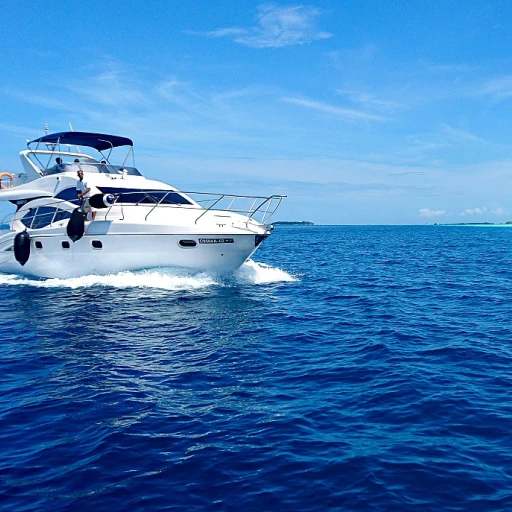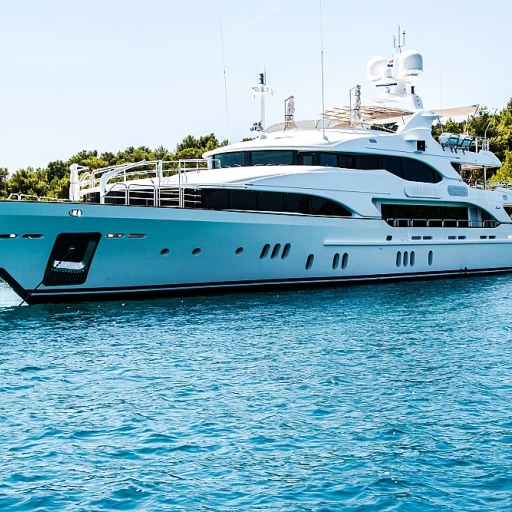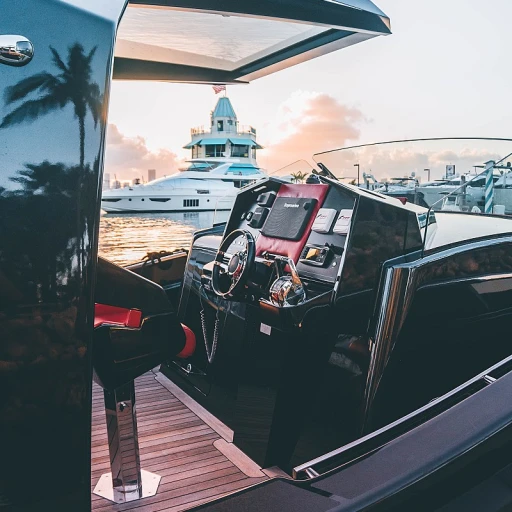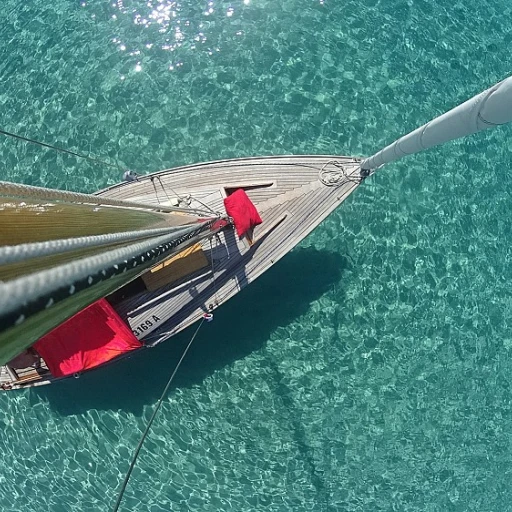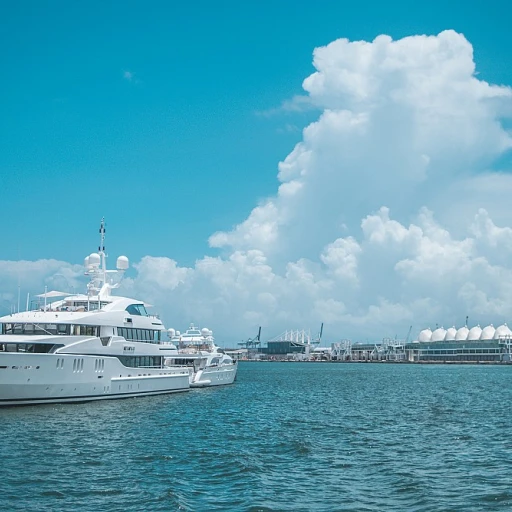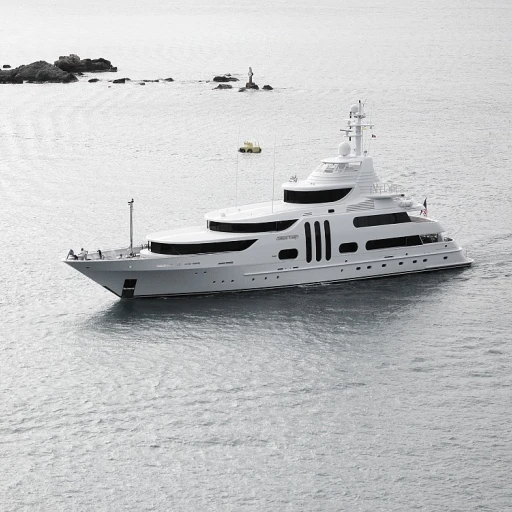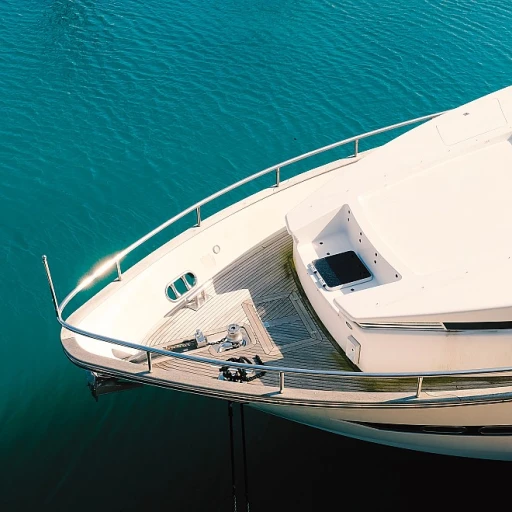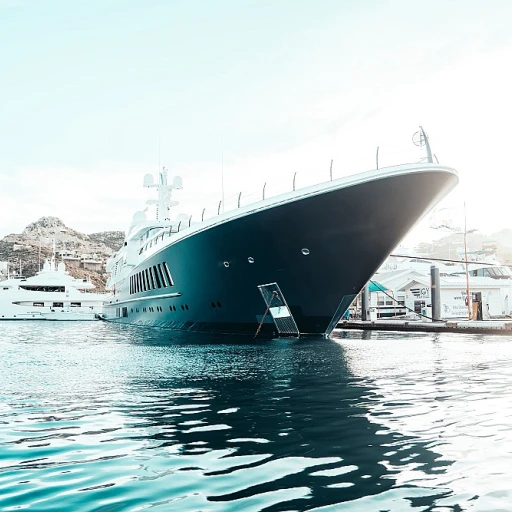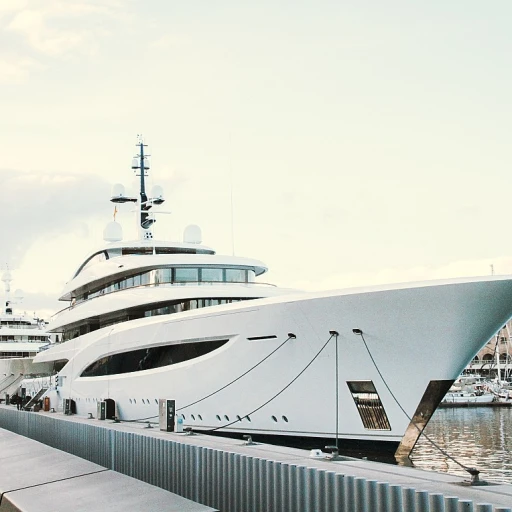Understanding the Role of a Boat Rudder
The Backbone of Steering in Marine Vessels
The rudder is an unassuming yet highly significant component when it comes to the mechanics of marine vessels. Positioned strategically at the stern, it plays a critical role in navigation, offering directional control. Whether you're maneuvering a sleek yacht or a more robust fishing boat, the rudder ensures smooth sailing by helping the vessel's helm respond with precision to the captain's commands.
Boats are equipped with either a ship wheel or a tiller, which, when turned, indirectly pivots the rudder stock. This simple yet effective motion allows for efficient steering of the vessel. Rudders, in combination with a propeller, dictate the flow of water, enabling fine adjustments that are crucial, especially in tight spots or tricky water conditions.
In sailboats, the rudder becomes even more essential as it works alongside sails to harness wind power and guide the vessel. Proper rudder design significantly affects performance. As the price range of boats differs greatly, so does the sophistication of their rudder systems — from basic configurations on smaller sailboats to complex systems in luxury yachts.
For anyone delving into the intricacies of yacht performance, understanding the rudder's interaction with other parts of the ship, like the propeller and tiller arm, is vital. This interconnectedness ensures optimized sailor and vessel exchanges, allowing you to enhance boat maneuverability effectively.
For those fascinated by the nuances of yacht control, exploring the role of
induction burners with boat gimbals can provide deeper insight into achieving stability onboard and underscore how various onboard elements contribute to a seamless journey.
Types of Rudders in the Yacht Industry
Exploring Different Rudder Designs: A Deep Dive
In the ever-evolving yacht industry, the choice of rudder types has a profound impact on the steering and overall performance of a boat. Different rudder designs cater to various needs, whether it be enhancing speed, maneuverability, or stability. Here, we delve into the prominent types of rudders you're likely to encounter in the marine environment.
- Spade Rudders: These are the go-to option for many modern sailboats and yachts. A spade rudder is fully balanced and unconnected to the stern, providing minimal resistance and superior maneuverability. They’re mounted via a rudder stock that traverses the hull, allowing efficient water flow across the rudder surface.
- Skeg Rudders: Often chosen for their robustness, skeg rudders are partially protected by a blade or skeg and are favored when durability is a concern. They excel in providing extra protection and strength but might sacrifice some degree of nimbleness compared to their spade counterparts.
- Transom Hung Rudders: These are typically found on smaller vessels and are affixed directly to the stern. While straightforward in design and cost-effective, transom hung rudders might not offer the same level of control in rough seas, but they are easy to maintain and replace.
Rudder-Incorporated Propellers: Another compelling innovation is the development rudder system that integrates a rudder and propeller, allowing for unparalleled propulsion efficiency and directional control. This symmetry reduces drag while enhancing the boat's ability to pivot smoothly.
The choice of rudder will often be influenced by the specific requirements of your vessel and sailing style, marrying function with the rudder's material and design specifics. Understanding these different types of rudders will empower you to select the best fit based on your yacht's needs and the price considerations.
For those seeking enhanced maneuverability, consider exploring the
right pontoon ladder options available to complement your chosen rudder system.
Materials and Design Considerations
Choosing the Right Materials for Your Rudder
The materials used in the construction of a boat rudder are critical in determining both its durability and performance. As yacht enthusiasts know, a rudder's material can greatly affect a vessel's steering and overall handling. The marine environment, known for its corrosive nature, dictates the use of specific materials that ensure longevity and reliability.
Many boat rudders are crafted from materials including stainless steel for the rudder stock and reinforced fiberglass or composite materials for the blade. These choices help balance strength and lightweight properties, critical for effective rudder steering and maneuverability. High-quality materials can impact the price of a rudder, reflecting on the overall budget for sailboat enhancements.
Moreover, design considerations cannot be overlooked. A rudder's shape and size must be tailored to the specific needs of the vessel, whether it's a nimble fishing boat or a large sail boat meant for open water cruising. The design should ensure that water flow over the rudder is maximized for effective control, permitting smooth transitions and responsiveness, particularly when using the steering wheel or tiller arm.
Integration with other components like the propeller is another vital aspect. Innovations such as the development of a propeller rudder can further streamline steering capabilities, particularly in vessels where great agility is required. Thus, understanding the intricate balance between materials and rudder design is paramount for those aiming to optimize their marine experience.
Enhancing Performance through Rudder Design
In the intricate world of yachting, the performance of a vessel largely hinges on the design and operation of its rudder systems. A well-crafted rudder can significantly influence how a boat maneuvers through water, impacting not just speed but overall stability and responsiveness.
For starters, the integration of a boat rudder with the steering mechanism determines how effortlessly a ship or sailboat can navigate changing water conditions. The helm, typically controlled by a wheel or tiller, adjusts the rudder's position to steer the boat in the desired direction. This interaction is vital for maintaining a straight course or executing precise turns, especially when considering varying water flow and wind conditions.
A critical aspect of rudder performance is its relationship with the propeller. The rudder's proximity to the propeller can either enhance or hinder water flow efficiency, affecting propulsion and control. This is particularly crucial for vessels equipped with trolling motors, where precise steering is paramount.
Moreover, the position of the rudder at the stern of the vessel allows for optimal leverage, enabling swift changes in direction with minimal input. The effectiveness of rudder steering and the feedback received through the ship wheel or tiller arm is pivotal for a seamless experience.
The rudder stock, which connects the rudder to the steering apparatus, must be robust enough to withstand marine pressures without compromising design integrity. Factors such as tiller wheel alignment and rudder stock durability are central to maintaining performance over time, ensuring that rudder systems are poised to handle both calm and turbulent waters.
In conclusion, a well-thought-out rudder design can positively influence vessel performance, making it a critical component in the art of sailing. The constant development in rudder technology, coupled with customer reviews, continues to drive innovation, enhancing the marine industry's ability to offer great performance standards at competitive prices.
Challenges in Rudder Maintenance
Maintaining the Rudder: A Critical Task
Maintaining a yacht's rudder is an essential part of ensuring smooth navigation and steering on the water. Given the complex role that boat rudders play in effective steering, it is crucial for yacht owners to pay attention to the various components involved in rudder maintenance.
Keeping a close eye on the rudder stock is important, as it is the backbone of rudder functionality. Common issues like corrosion can impede the effectiveness of the rudder and ultimately affect the vessel's handling. Regular inspection of the rudder stock for any signs of wear or damage can prevent unforeseen issues in open water.
It's also important to consider the effects of water flow around the rudder areas. Over time, marine growth and debris can accumulate and affect the rudder's efficiency, especially in regions prone to heavy marine traffic. Ensuring a clean environment around the rudder can maintain optimal performance.
Rudder design and installation can influence maintenance needs. Some designs may require special attention at the helm and stern, particularly where wheel or tiller steering is employed. This is because the steering mechanics can introduce unique wear-and-tear challenges.
Owners might find themselves seeking customer reviews for the best maintenance routines or products like durable stern coatings to preserve rudder integrity. Understanding the material choices used in the construction of your rudder can also inform appropriate maintenance strategies, further extending the life of this vital component.
Incorporating these considerations into regular yacht upkeep not only preserves the rudder's performance but also maintains the vessel's overall value, especially in competitive markets where price and condition play a significant role in attractiveness. By addressing these rudder-specific maintenance challenges, yacht enthusiasts can ensure that their vessels remain sea-worthy and provide a great sailing experience.
Innovations in Rudder Technology
Innovative Advancements Elevating Rudder Technology
The realm of rudder technology has seen a significant evolution, mirroring the broader ship and yacht industry developments. As the quest for enhancing performance and safety becomes increasingly crucial, innovations in rudder design and materials are leading the charge.
To start with, one of the notable advancements is the integration of smart rudder systems. These systems enhance rudder steering efficiency by providing real-time feedback on water flow and rudder angle. This not only improves the steering wheel responsiveness but also reduces the stress on the rudder stock and tiller arm.
Additionally, the use of advanced composite materials has become more prevalent. These materials offer great strength and durability, while significantly reducing the weight of boat rudders. This has a direct impact on a vessel's price and performance, allowing for faster sailing speeds and improved fuel efficiency. As more manufacturers explore these materials, customer reviews highlight positive feedback on their longevity and resilience.
Moreover, developments in the design of rudders have been significant. For instance, the adoption of hydrofoil rudders in certain high-performance sailboats enhances lift and reduces drag. This design not only aids in maintaining the helm stability but also contributes to a smoother and faster sailing experience.
Finally, the use of computer-aided design (CAD) software has revolutionized rudder ship construction. These technologies allow precise modeling and testing, ensuring optimal performance before the rudders are even fabricated. It also facilitates custom rudder designs tailored for diverse ship types, from luxury yachts to fishing boats.
These innovations are a testament to the industry's commitment to improving marine vessel safety and efficiency. As technology continues to evolve, the future of rudder design and application looks promising, with ongoing research poised to unveil even more groundbreaking solutions.
